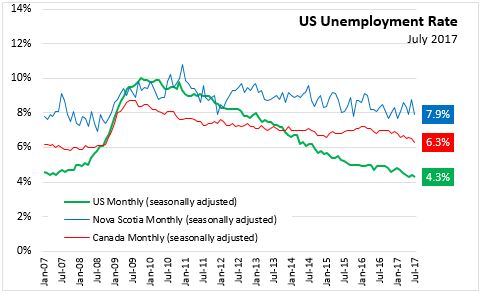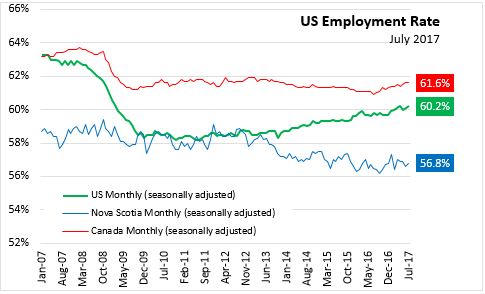The Economics and Statistics Division maintains archives of previous publications for accountability purposes, but makes no updates to keep these documents current with the latest data revisions from Statistics Canada. As a result, information in older documents may not be accurate. Please exercise caution when referring to older documents. For the latest information and historical data, please contact the individual listed to the right.
<--- Return to Archive
For additional information relating to this article, please contact:
August 04, 2017US EMPLOYMENT, JULY 2017 US non-farm employment rose +209,000 in July 2017, slower than the revised 231,000 gain reported last month. Over the previous 12 months, employment increased by an average of +180,000 per month.

July employment in food services and drinking places was up 53,000 over June while professional/business services added 49,000 jobs. Health care employment rose 39,000. Mining employment also edged up (+1,000) while most other major industries showed little change.
The US unemployment rate was down slightly to 4.3 per cent in July. Comparing the US with Canada and Nova Scotia, the NS unemployment rate for July was 7.9 per cent while Canada's was 6.3 per cent. Although monthly unemployment rates are more variable in Nova Scotia (smaller sample size) the long run average of NS unemployment rates is typically higher than the US, except during the 2009 recession.

The US employment rate continued its upward trend with a 0.1 percentage points increase to 60.2 per cent in July. This is higher than the NS July employment rate of 56.8 per cent, which has experienced some months of volatility over the last 12 months. Canada's national employment rate has been on a rising trend since the middle of 2016, reaching 61.6 per cent in July.

The US participation rate increased 0.1 percentage points in July to 62.9 per cent, with the civilian labour force up by 349,000. The NS participation rate in the labour force has been volatile in recent months, falling to 61.7 per cent in July. Canada's labour force participation rates have been stable at just under 66 per cent since 2015.

Note: NS and US labour force statistics refer to different working-age cohorts.
Source: US Bureau of Labor Statistics, Statistics Canada CANSIM table 282-0087
<--- Return to Archive